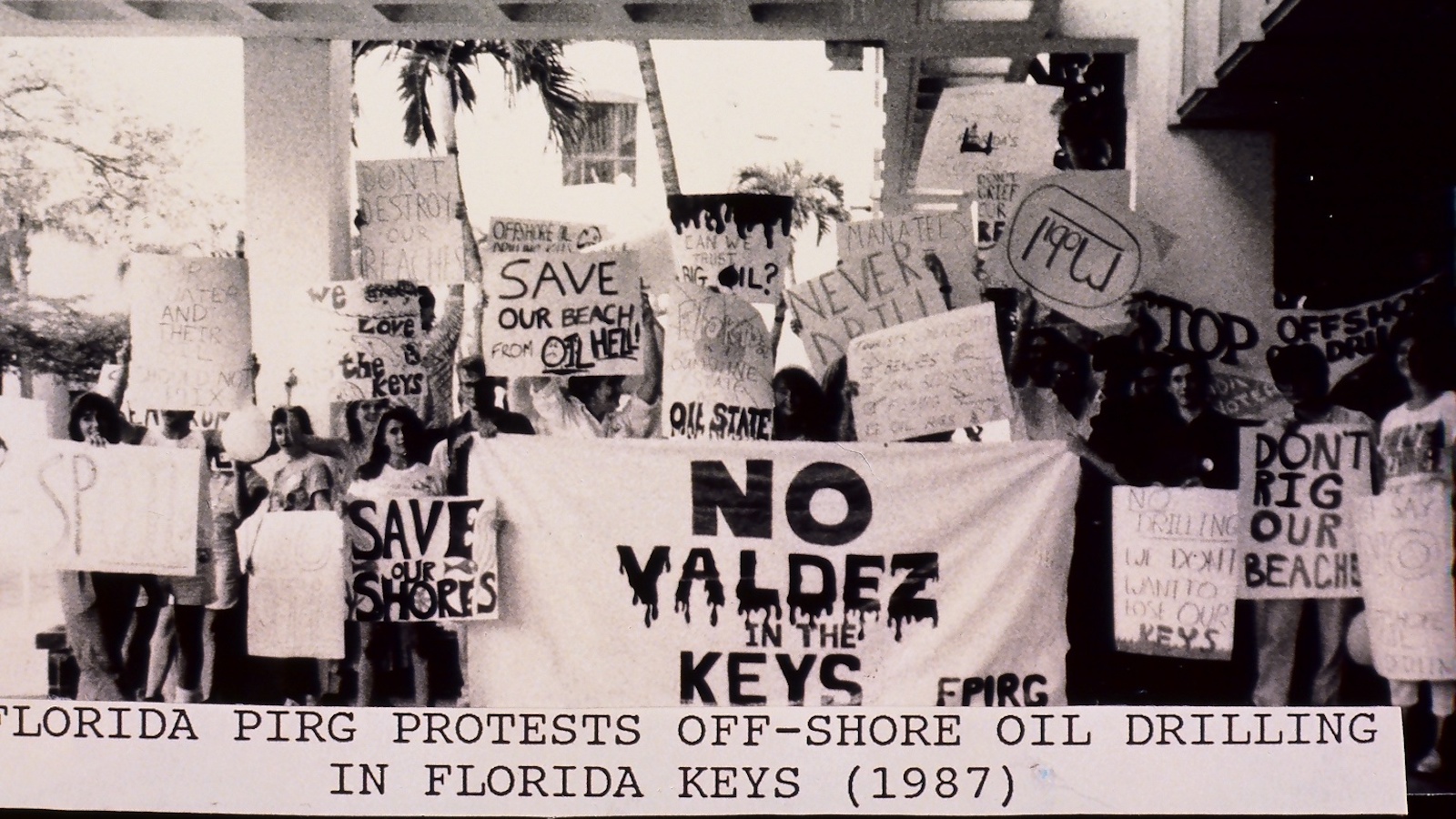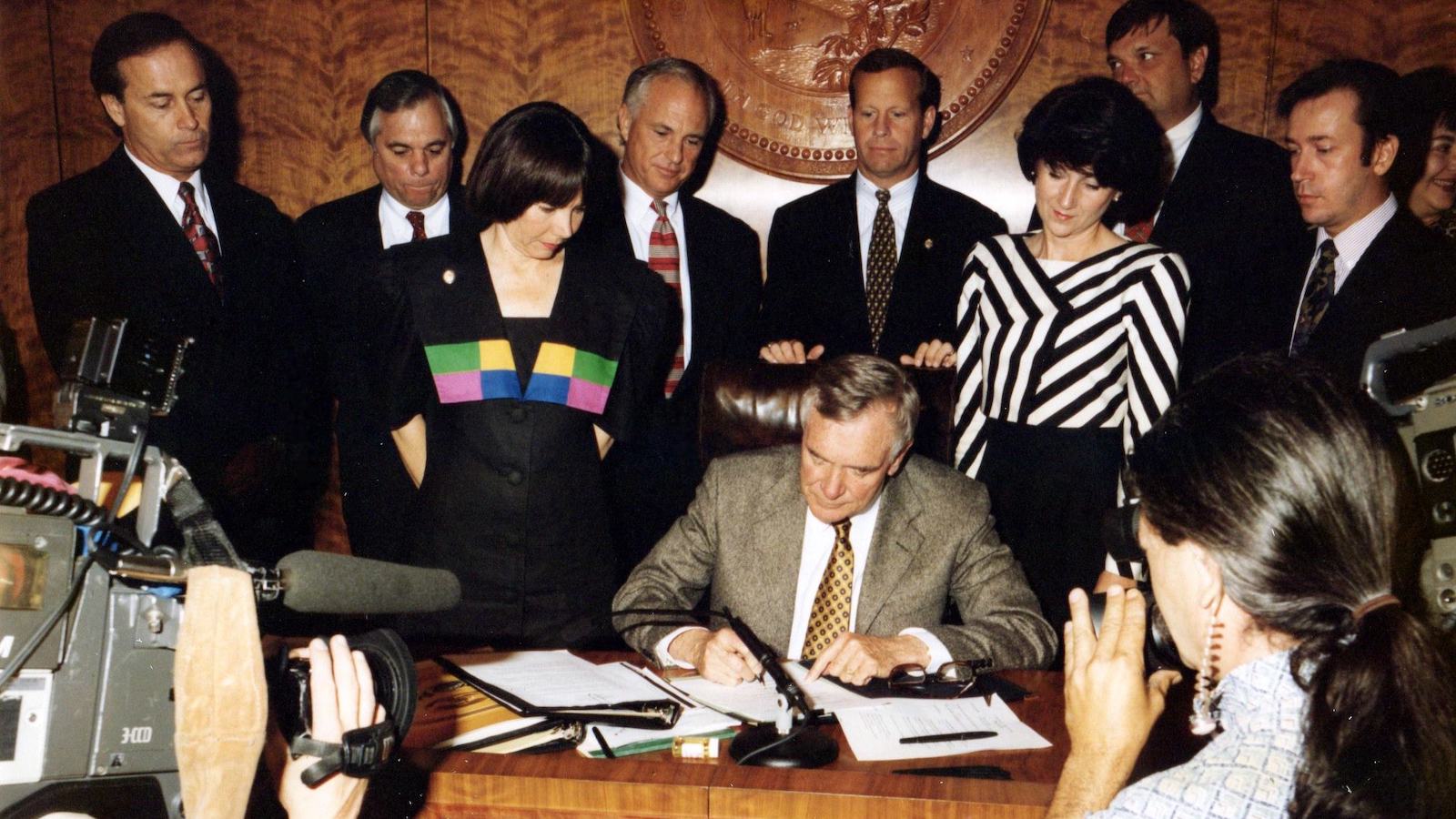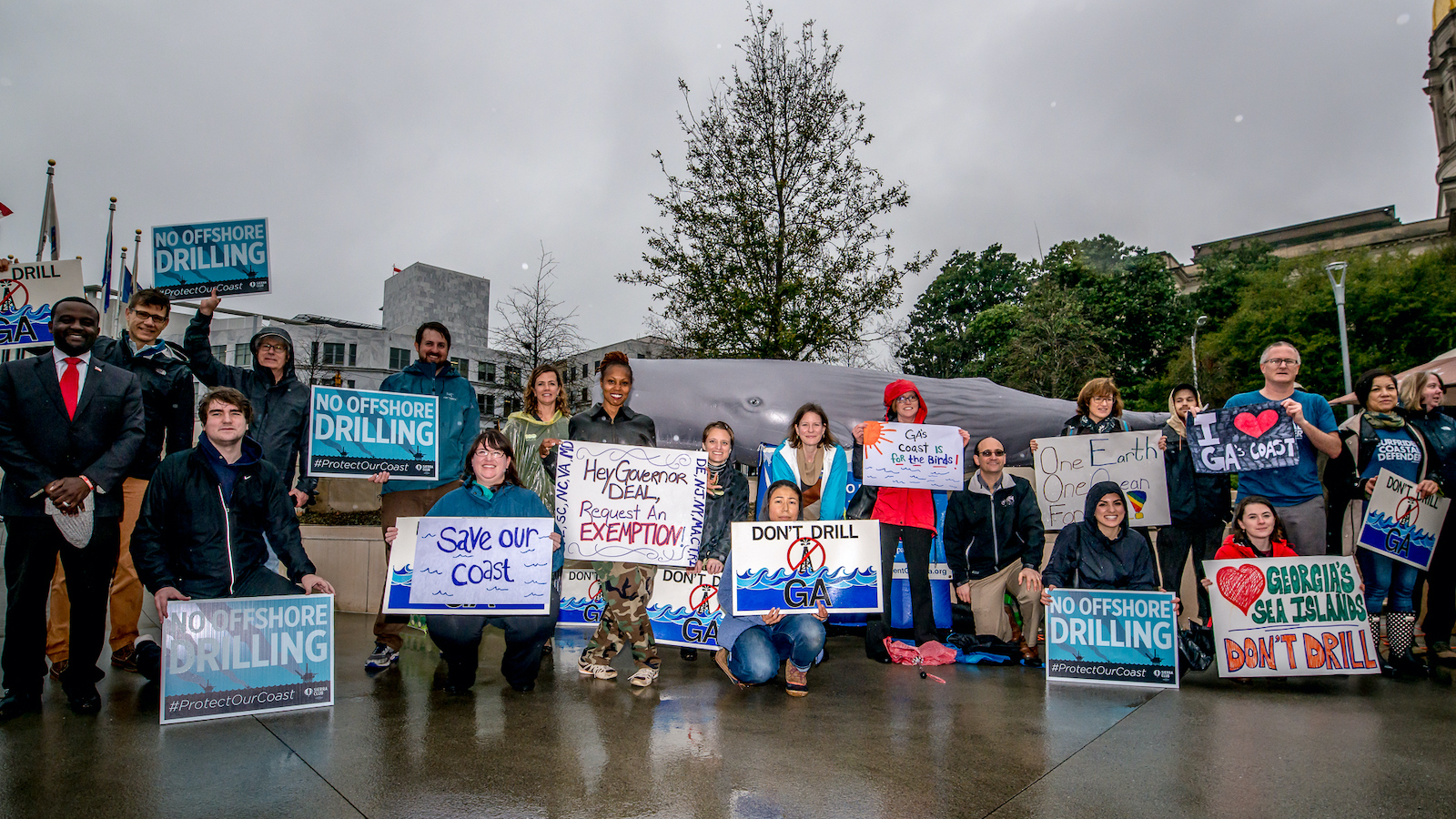Sea change: How decades of action and advocacy shifted the politics of offshore drilling
On Sept. 8, 2020, President Trump traveled to Jupiter, Florida, where he ordered the extension of a 10-year moratorium on offshore drilling along Florida’s Gulf Coast and southeastern states’ Atlantic coasts.

On Sept. 8, 2020, President Trump traveled to Jupiter, Florida, where he ordered the extension of a 10-year moratorium on offshore drilling along Florida’s Gulf Coast and southeastern states’ Atlantic coasts.
In extending this moratorium, the president broke from his own stance in favor of offshore drilling, just two years after his Interior Department announced plans to allow new oil and gas drilling in all U.S. coastal waters.
Yet political observers weren’t surprised. With the November election quickly approaching, President Trump needs the 29 electoral college votes Florida provides. In order to win favor with Florida voters, opposing offshore drilling in Florida’s crystal-clear waters is a political no-brainer.
As true as that is today, it hasn’t always been the case.
In 1981, Florida PIRG (part of The Public Interest Network, which includes Environment America and Environment Florida) launched the Save Our Shores campaign to halt the proposed leasing of 93 million acres of water off the Gulf Coast and Florida Keys for oil and gas development. At first, it was a lonely battle. In 1984, Florida PIRG’s Ann Whitfield was the only citizen to testify at an Interior Department hearing on offshore drilling.
The Save Our Shores campaign sought to raise awareness of and opposition to the dangers of offshore drilling in Florida’s waters. Unfortunately, it’s easier to raise awareness in the wake of disaster. That’s exactly what happened in 1989, when the Exxon Valdez oil tanker struck a reef off the coast of Alaska, spilling 11 million gallons of crude oil in the biologically rich waters of Prince William Sound.
The staff and volunteers of Florida PIRG didn’t just watch in horror — we organized.
-
Florida PIRG hosted packed public meetings, where concerned citizens from Pensacola to the Florida Keys weighed in on the potentially disastrous environmental and economic impacts of offshore drilling.
-
In 1987, businesses in Key West, where coastal tourism is the bedrock of the local economy, draped their windows in black crepe and shut down for two hours as 2,000 residents attended a raucous Interior Department public hearing. Congress responded by passing a series of moratoriums on Florida drilling.
-
Then, in 1990, we celebrated two historic victories for Florida’s coast. That year, then-President Bush announced a 10-year ban on new leasing and drilling in federal waters off the Everglades and Florida Keys, and the Florida Legislature passed a permanent ban on drilling in all of Florida’s state waters.

In 1997, Florida PIRG lobbyist Mark Ferrulo (top right) was invited by Governor Lawton Chiles (center) to attend the bill signing of a new law that strengthened Florida’s 1990 ban on drilling in state waters, a bill Florida PIRG helped enact.
In the years since, Environment America has worked to defend all of America’s coasts from drilling. Again, the oil industry made our job easier, but not in the way we wanted.
In 2010, an explosion on the Deepwater Horizon drilling platform triggered the worst oil spill in U.S. history. The world watched for 87 days as 210 million gallons of crude oil gushed into the Gulf of Mexico, killing thousands of marine animals, scarring coastlines, and exposing cleanup workers and residents to toxic chemicals.
With the public reawakened to the dangers of offshore drilling, we rallied coastal communities to urge President Obama to declare a moratorium on offshore drilling in most U.S. waters — an action he took by the end of his second term.
Offshore drilling remains deeply unpopular in coastal communities. In 2018, when then-Interior Secretary Ryan Zinke announced the Trump administration’s plans to open all our coastal waters to offshore drilling, Republican and Democratic governors alike voiced their opposition. Less than a week after the announcement, Secretary Zinke swiftly reversed course and exempted Florida’s waters from drilling at the request of Florida’s then-Gov. Rick Scott. That same year, Environment Florida and Progress Florida backed a state constitutional amendment on the ballot banning offshore drilling in state waters. It earned nearly 70 percent of the vote.

Decades after we launched the Save Our Shores campaign, our advocates and supporters gathered in 2018 to rally against offshore drilling. Credit: Erik Voss
Today, it’s clear that supporting offshore drilling in Florida — and increasingly, Georgia, South Carolina and North Carolina — can sink a politician’s career. That wasn’t always the case and it didn’t change from one incident, announcement or even a single disaster. Canvassing, thousands — probably hundreds of thousands — of petition signatures, hundreds of lobby meetings, dozens of op-eds and letters to the editor, educational events and other actions made the difference. And they did so while transcending the partisan divide, garnering support from both sides of the aisle on an issue that affects everybody.
Because when oil spills, it doesn’t care whether it lands on the beaches of a red, blue or purple state. And the people of Florida — Democrats, Republicans and independents alike — have now made it clear to candidates for office that allowing oil to threaten our beaches is a deal-breaker.

